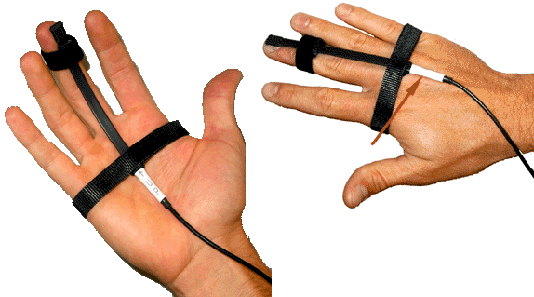Palmar attachment recommended, with “UP” label facing out (shown below left).

If a protocol requires posterior (dorsal) attachment, the “UP” label must be placed toward skin for optimum response (shown above right).
Part #: TSD131-MRI
Use this transducer to record finger flexion/extension responses from human subjects in the MRI. The transducer conforms to the shape of the finger and attaches via Velcro straps.
MRI Use: Conditional to 3T
Condition: Conductive parts of transducer are electrically and thermally isolated from subject. (See Specifications for components.)
See More...
Stay Connected